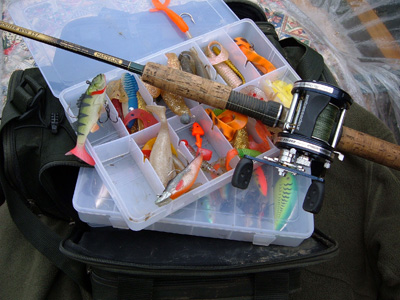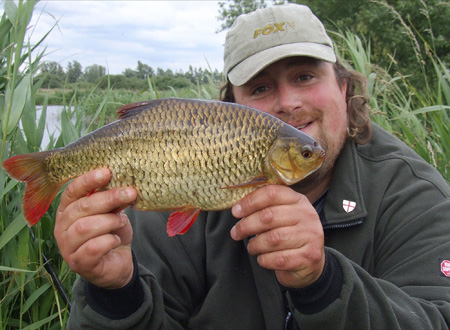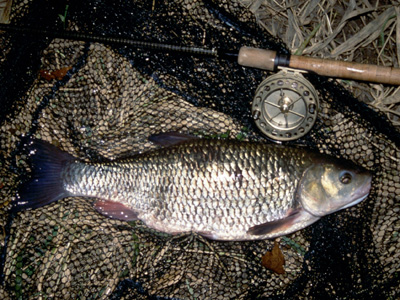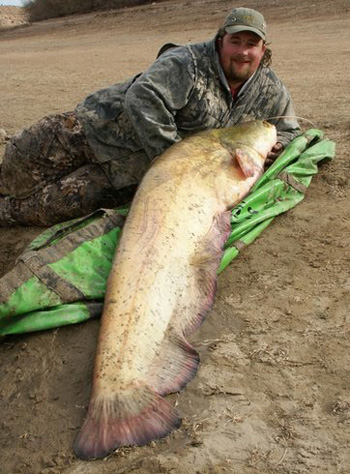Don’t worry this isn’t going to be a whinge fest, but actually something completely different.
We all like to study our quarry, in fact I would go so far as to say that it’s one of the best ways of all to learn their habits and in so doing to formulate the plans by which we might bring about their downfall. But though we might study where the fish are, what they are eating and how they react to our baits, how many of us actually consider the effect that sound has upon fish?
 In predator fishing sound is an accepted part of attracting the quarry to our bait, particularly so when lure fishing, where such things as rattles etc are added to purposely produce sound. However, it does also apply equally as much to non-predatory species too.
In predator fishing sound is an accepted part of attracting the quarry to our bait, particularly so when lure fishing, where such things as rattles etc are added to purposely produce sound. However, it does also apply equally as much to non-predatory species too.
How so? You may ask.
Well on a basic level I am sure there cannot be many of us that haven’t experienced the situation where some idiot slams a car door too hard and all the fish on the surface scatter. Or on a similar vein where the fish do the off when someone shouts across the lake to ask their mate how they are getting on.
The thing to remember is that fish do not hear in the same way that we do. On a pure hearing level fishes’ hearing is quite probably far worse than our own, and certainly not up to the likes of dogs that can differentiate between million of sounds that do not register on our wavelength. However where a fish’s senses are far more advanced is in their ability to ‘feel’ sound through vibrations along its lateral line. That is why fish scatter when the door is slammed, they ‘hear’, or rather they feel, sound waves.
Knowing this is one thing, but turning it to our advantage is another, after all we are unlikely to start targeting most of our coarse fish species with lures, but there are other ways that we can use an understanding of sound to our advantage, but first of all let me tell you a little story that opened my eyes to the value of sound.
 I was on my local River Cam one day, baiting up for carp. Now in the summer the Cam is usually pretty clear and you can see the fish quite easily. I began by baiting up with wheat that had been well and truly soaked. Before I began to put the bait in there was only the odd small rudd in the swim, but as soon as the wheat started to go in a shoal of bream descended into the swim and pretty much nothing else I put in would shift them.
I was on my local River Cam one day, baiting up for carp. Now in the summer the Cam is usually pretty clear and you can see the fish quite easily. I began by baiting up with wheat that had been well and truly soaked. Before I began to put the bait in there was only the odd small rudd in the swim, but as soon as the wheat started to go in a shoal of bream descended into the swim and pretty much nothing else I put in would shift them.
However, the last thing I baited up with was sweetcorn, which has its own characteristic ‘plop’ as it goes in. As soon as I did this, several big rudd moved into the swim from different angles to grab the golden grains before they hit bottom. This is behaviour I have seen from rudd on many occasions, corn being the bait every time, but maggots are not far behind in getting the same response. Now I don’t necessarily mean in getting them to feed when already in the swim, rather the sound of the bait hitting the surface attracted the fish from neighbouring swims.
 But it’s not just with rudd that I have seen this behaviour, I’ve observed it many other species too. I have lost count of the number of summer chub that I have stalked with worms off the surface, the trick being to make as big a ‘plop’ behind the chub with the landing of the worm as possible, making the chub turn to investigate and then engulf the offending article.
But it’s not just with rudd that I have seen this behaviour, I’ve observed it many other species too. I have lost count of the number of summer chub that I have stalked with worms off the surface, the trick being to make as big a ‘plop’ behind the chub with the landing of the worm as possible, making the chub turn to investigate and then engulf the offending article.
On waters where pellets are regularly used I have absolutely no doubt that fish get tuned in to the sounds of pellets hitting the water. On waters like this I now throw my pellets up in the air as high as I can to make as much noise as I possibly can.
 However, probably the best example of all that I have seen where fish have got tuned into sound was on the River Ebro in Spain with the rivers catfish population. I have visited the river on several occasions with Catfish Capers, who were amongst the first to get on the pellet trail, and noticed that often when things were quite rather than introduce more bait the guys would go out in the boats and deliberately just spin the boat around over the baited rods – it worked every time and the cats switched on, in fact it really was crazy how well it worked on the river. It makes you wonder whether it would be possible to replicate this with a baitboat in some way, say adding something to the boat that would add to the noise as it goes in.
However, probably the best example of all that I have seen where fish have got tuned into sound was on the River Ebro in Spain with the rivers catfish population. I have visited the river on several occasions with Catfish Capers, who were amongst the first to get on the pellet trail, and noticed that often when things were quite rather than introduce more bait the guys would go out in the boats and deliberately just spin the boat around over the baited rods – it worked every time and the cats switched on, in fact it really was crazy how well it worked on the river. It makes you wonder whether it would be possible to replicate this with a baitboat in some way, say adding something to the boat that would add to the noise as it goes in.
Moving over to predator fishing before I finish, and although predators are better catered for it’s still mainly along the lure fishing line, however there are ways that you can add sounds to your baits to add extra attraction to them. For livebaits the best method I have found is to add a rattle to the trace. These are sold commercially for catfish but they are equally as effective for pike, zander and perch. These are just clipped onto the trace above the bait and as it moves so the rattle sounds. I have caught a number of cats with the aid of these, including the cats that won me and Matt Hall the inaugural Catfish Challenge Cup.
The final little trick to use to add some sound into your predator baits is for either trolled or sink and draw baits, and that is to add a rattle prop to your rig. These look like a little rocket and are filled with shot, as they are pulled through the water they spin rapidly making a hell of a racket – along with adding extra vibrations to boot.
So there you have it, just a few ideas and examples where I have seen the benefits that sound can bring. It’s something definitely worth thinking about when you are next out on the bank, who knows it may just add a fish or two to the bag!










